The number is staggering. A grave with 215 bodies of Indigenous children. I’m numb with outrage at the discovery. Yet, not naïve to think that this is but a fraction of the over 4000 deaths of children while under the “care” of the residential school system. What other graves have yet to be discovered? What other wounds will be reopened, without a proper plan for lasting healing? This is a history that was never taught to me as a child, but one that I learned in adulthood. I’m thankful for the teachings of Ray John Jr., Starr McGahey-Albert and Robyn Michaud, who over the years have provided me with a glimpse into the lives of our Indigenous students and more importantly a historical perspective about parents and grandparents and their mistrust of the school system. I used to think that “I got it”. I worked in communities where parents had a bad experience with school and therefore projected those worries and concerns on their own children. We needed to work creatively with many families to get them to trust us and to believe that we had their child’s best interests at heart.
But today I realized that “I’ll never get it”. I will never be able to comprehend the pain, suffering and mistrust of a “school” system that not only failed our Indigenous families, but stripped them of a lifetime with their children. It not only took their children with the intent of imparting a culture so juxtaposed to their own, but it also took the lives of their children.
How dare those institutions be referred to as “schools”.
Residential schools started in 1828 and continued into the 1990s. And in the midst of their tenure, the Education Act came into law in 1870, with a purpose of a “strong public education system is the foundation of a prosperous, caring and civil society” I choke on those words now. Is this how a caring and civil society knowingly treats children?
Social media was filled with posts and pictures today, but I want to end this blog post with the Twitter feed from Tracy Chisholm. Tracy works at a school in Lambeth, where they welcome students from Standing Stone school for grades 7 and 8 as the school is currently a JK-6 school. She is a kind, caring and compassionate educator and I have no doubt that her tears continued to flow throughout the day as she supported her students. 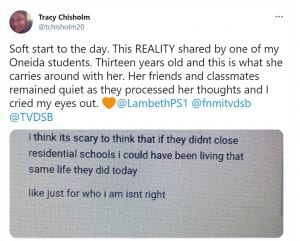
In the midst of this tragic discovery, I’m thankful for educators like Tracy, who cry. Because tears need to flow!

 This past week, I was thrilled to find 2 more images, which may just make it to our set of photos. I’m so intrigued by this visual of the tree. Even without a traditional root system, it is growing and thriving thanks to the support of the steadfast branches of the mature tree. My head is spinning with analogies of the power of having someone there to support you, even if you feel that your legs have been kicked out from underneath you. The second visual of the row of book houses falls right into my wheelhouse about the power of books to take you places that you might never expect to go.
This past week, I was thrilled to find 2 more images, which may just make it to our set of photos. I’m so intrigued by this visual of the tree. Even without a traditional root system, it is growing and thriving thanks to the support of the steadfast branches of the mature tree. My head is spinning with analogies of the power of having someone there to support you, even if you feel that your legs have been kicked out from underneath you. The second visual of the row of book houses falls right into my wheelhouse about the power of books to take you places that you might never expect to go. When I posted it on social media this morning, a friend commented with “windows, doors and mirrors to the human experience”.
When I posted it on social media this morning, a friend commented with “windows, doors and mirrors to the human experience”.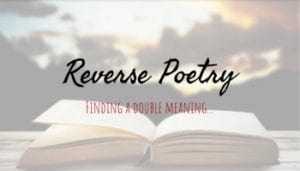 There is nothing quite like those wonderful invitations to join the learning ~ whether in person or during our current online learning world. This morning, I looked forward to 10:00 am, as I had been invited to join Mrs. Tyler’s grade five class. As a former grade five teacher, I’m constantly drawn to the creativity of this age group. Today, they wanted to showcase their latest writing samples. Our students are such gifted writers. The students had been mastering the art of the reverse poem ~ a genre that has the reader start at the top of the poem and read from top to bottom. In most instances the first reading, from top to bottom, is written with a negative or sad voice. Then as you reread from bottom to top, the perspective quickly changes to a positive tone/voice. I was so impressed with their use of transition words, beautifully selected vocabulary, and the collaborative group opportunity that many of them chose as they tackled this assignment. I was also so proud of how many of them had the courage to share their screen and read their poems. One student even took the task to another level and sung her composition.
There is nothing quite like those wonderful invitations to join the learning ~ whether in person or during our current online learning world. This morning, I looked forward to 10:00 am, as I had been invited to join Mrs. Tyler’s grade five class. As a former grade five teacher, I’m constantly drawn to the creativity of this age group. Today, they wanted to showcase their latest writing samples. Our students are such gifted writers. The students had been mastering the art of the reverse poem ~ a genre that has the reader start at the top of the poem and read from top to bottom. In most instances the first reading, from top to bottom, is written with a negative or sad voice. Then as you reread from bottom to top, the perspective quickly changes to a positive tone/voice. I was so impressed with their use of transition words, beautifully selected vocabulary, and the collaborative group opportunity that many of them chose as they tackled this assignment. I was also so proud of how many of them had the courage to share their screen and read their poems. One student even took the task to another level and sung her composition. It seems that without fail, on the first day back after a long weekend, the stream of emails is endless. Today was no different ~ although as our students are still working online, I was able to keep on top of them during the light of day. At times, the emails were flooding my inbox at a rate much faster than I could respond. Yes, I’m one of those people who prefer to see 0 unread messages. I know, I know ~ and I’m working on it…LOL
It seems that without fail, on the first day back after a long weekend, the stream of emails is endless. Today was no different ~ although as our students are still working online, I was able to keep on top of them during the light of day. At times, the emails were flooding my inbox at a rate much faster than I could respond. Yes, I’m one of those people who prefer to see 0 unread messages. I know, I know ~ and I’m working on it…LOL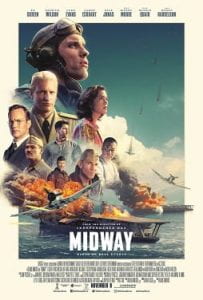
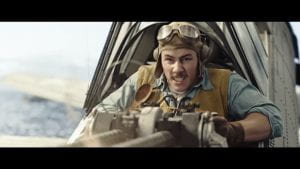 Aviation Machinist Mate First Class Bruno P. Gaido ~ at a pivotal moment, Bruno jumps into the cockpit of one of the fighter planes, while it is still on the carrier and begins to fire back at the incoming enemy fire. He is successful and immediately promoted for his bravery. When asked about his bold move and his seemingly no fear mantra, retells the story of his uncle, who used to work on the Empire State Building, miles above the ground on a steel girder every day without any ropes or safety harnesses. He never fell once, nor let fear paralyse him from his work. And then as fate would have it, one day walking home a cab jumps the curb and kills him. His mantra was, “Why worry?” Although Gaido does not survive to see the victory, his attitude about embracing opportunity, living in the moment, and doing what’s right is definitely a leadership skill that I admire in so many of my colleagues.
Aviation Machinist Mate First Class Bruno P. Gaido ~ at a pivotal moment, Bruno jumps into the cockpit of one of the fighter planes, while it is still on the carrier and begins to fire back at the incoming enemy fire. He is successful and immediately promoted for his bravery. When asked about his bold move and his seemingly no fear mantra, retells the story of his uncle, who used to work on the Empire State Building, miles above the ground on a steel girder every day without any ropes or safety harnesses. He never fell once, nor let fear paralyse him from his work. And then as fate would have it, one day walking home a cab jumps the curb and kills him. His mantra was, “Why worry?” Although Gaido does not survive to see the victory, his attitude about embracing opportunity, living in the moment, and doing what’s right is definitely a leadership skill that I admire in so many of my colleagues. Between preparing for this week’s upcoming interviews for a position that involves Outdoor Education for our Kindergarten classes and participating in several transition meetings for our newest Coyotes, I’m struck by the notion that many of this year’s cohort of first-time school learners will have spent almost half of their short lives in the heart of a global pandemic. Most notably, those opportunities that pre-school children are historically provided such as play dates, visits with extended family members and participation in community programs at Family Centers and Public libraries have all been compromised for so many of these learners that we’re about to welcome into our schools, as a result of lockdowns. We know that it is through those social opportunities that young children begin to discover that other children play an important role, that turn-taking is a part of building friendships and that talking and listening to peers is the best way to learn how to communicate our wants and needs.
Between preparing for this week’s upcoming interviews for a position that involves Outdoor Education for our Kindergarten classes and participating in several transition meetings for our newest Coyotes, I’m struck by the notion that many of this year’s cohort of first-time school learners will have spent almost half of their short lives in the heart of a global pandemic. Most notably, those opportunities that pre-school children are historically provided such as play dates, visits with extended family members and participation in community programs at Family Centers and Public libraries have all been compromised for so many of these learners that we’re about to welcome into our schools, as a result of lockdowns. We know that it is through those social opportunities that young children begin to discover that other children play an important role, that turn-taking is a part of building friendships and that talking and listening to peers is the best way to learn how to communicate our wants and needs.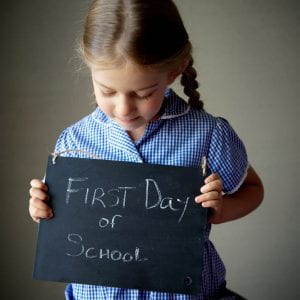
 Tonight, we witnessed the end of an era for TVDSB OPC. Our illustrious President, Scott Purvis passed the torch onto the next President. Scott has been an integral part of OPC for a number of years and most notably in the presidency (as either elect, current or past) for 5 years. Although each year has had its challenges, the past two years which have been embroiled in job action from every union group and a global pandemic, have, by far, required the exceptional leadership of Scott, like no other time in our recent history.
Tonight, we witnessed the end of an era for TVDSB OPC. Our illustrious President, Scott Purvis passed the torch onto the next President. Scott has been an integral part of OPC for a number of years and most notably in the presidency (as either elect, current or past) for 5 years. Although each year has had its challenges, the past two years which have been embroiled in job action from every union group and a global pandemic, have, by far, required the exceptional leadership of Scott, like no other time in our recent history.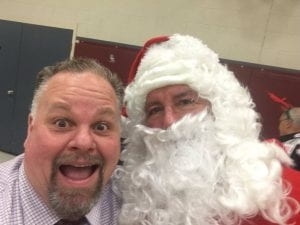
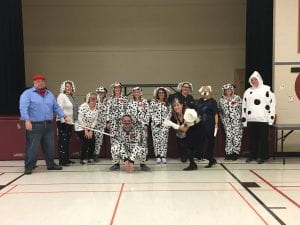 On behalf of each and every Thames Valley administrator, I want to thank Scott Purvis for being his genuine self ~ an educator who will step up and have the hard conversations, take on the tough issues, all the while never forgetting why we all do what we do!
On behalf of each and every Thames Valley administrator, I want to thank Scott Purvis for being his genuine self ~ an educator who will step up and have the hard conversations, take on the tough issues, all the while never forgetting why we all do what we do!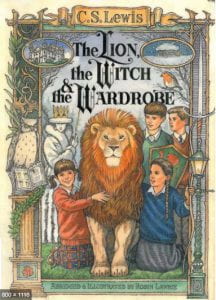 One student created a Pixton about a group of friends who follow their dog, Prince through a magic mirror into another land. I readily shared my connection to that story, as it reminded me of C.S. Lewis’, “The Lion, The Witch and the Wardrobe”. I reminisced about my days as a Grade 5 teacher and my love of sharing this story with my class, complete with making Turkish Delight (which sometimes turned out as an edible treat and sometimes resembled jelly) and heated debates about the White Witch.
One student created a Pixton about a group of friends who follow their dog, Prince through a magic mirror into another land. I readily shared my connection to that story, as it reminded me of C.S. Lewis’, “The Lion, The Witch and the Wardrobe”. I reminisced about my days as a Grade 5 teacher and my love of sharing this story with my class, complete with making Turkish Delight (which sometimes turned out as an edible treat and sometimes resembled jelly) and heated debates about the White Witch.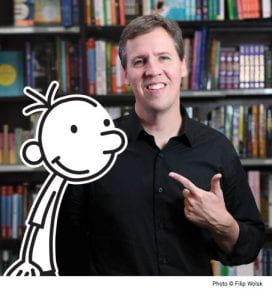
 Today someone posted this picture from Shanghai. It’s a scannable QR code that will allow users to download a video game. Talk about taking information to the airwaves in a whole new way. Think about the potential of this technology for advertisements. We’ve already witnessed the evolution of the billboards. Many of today’s billboards have already advanced to digital displays that can be updated remotely. It is rare to see scaffolding and a team of workers affixing huge sheets of papers, only to have them come unaffixed and start to dangle in the wind. Passersby would have to use their inference skills to figure out what products were being advertised. With QR technology, companies can quickly change the advertisement from their iPhones on a regular basis, with the hopes of enticing potential customers.
Today someone posted this picture from Shanghai. It’s a scannable QR code that will allow users to download a video game. Talk about taking information to the airwaves in a whole new way. Think about the potential of this technology for advertisements. We’ve already witnessed the evolution of the billboards. Many of today’s billboards have already advanced to digital displays that can be updated remotely. It is rare to see scaffolding and a team of workers affixing huge sheets of papers, only to have them come unaffixed and start to dangle in the wind. Passersby would have to use their inference skills to figure out what products were being advertised. With QR technology, companies can quickly change the advertisement from their iPhones on a regular basis, with the hopes of enticing potential customers.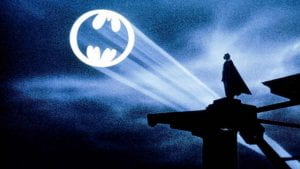 (which would allow the Caped Crusader know that he was needed it Gotham City) and now to this form of visual communication, to say, “The sky’s the limit” continues to hold true ~ probably even more so!!
(which would allow the Caped Crusader know that he was needed it Gotham City) and now to this form of visual communication, to say, “The sky’s the limit” continues to hold true ~ probably even more so!!